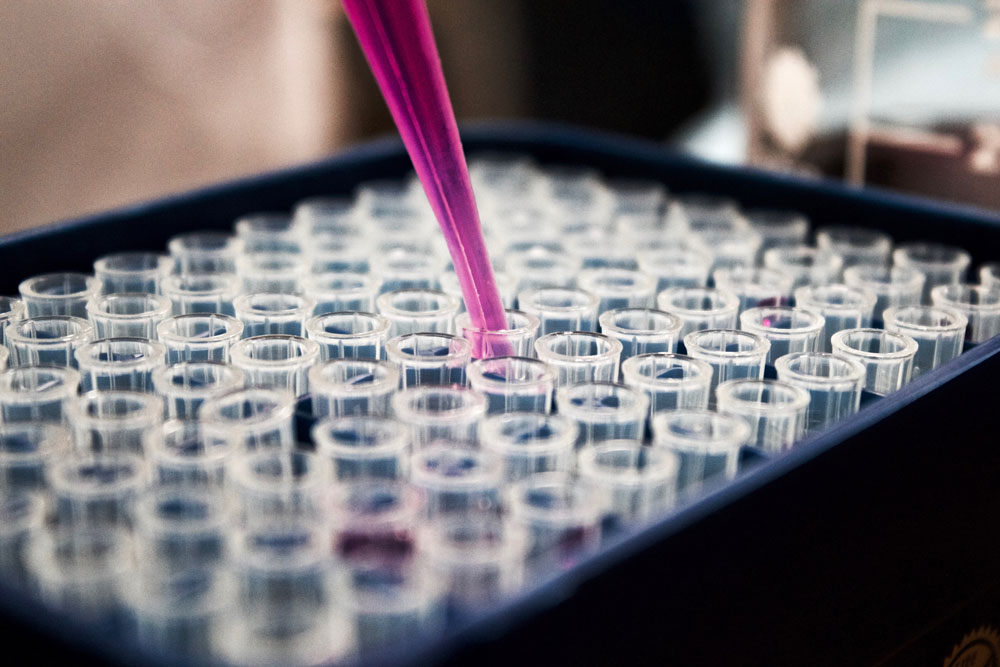Dr James Lilleker and Dr Hector Chinoy of The University of Manchester have put together this information about immune mediated necrotising myopathy to support those diagnosed with it or simply wishing to know more.
What is it?
Immune Mediated Necrotising Myopathy (IMNM) is a type of myositis. In the past, myositis was split only into Polymyositis and Dermatomyositis. However, over time it has become clear that there are other types of myositis. IMNM is one of the more common types since identified. Sometimes you might see IMNM being referred to as Necrotising Autoimmune Myositis (NAM) – this is just a different name for the same thing.
The key things which distinguish IMNM from the other types of myositis are:
- The muscle biopsy shows “necrosis” of muscle as a prominent feature. Necrosis is where muscle cells die, and we can see that this has happened when we look at the muscle cells down a microscope. In contrast to other types of myositis, inflammation in the muscle is not a prominent feature in IMNM.
- People with IMNM have certain autoantibodies (immune system proteins) in the blood. These are called SRP and HMGCR autoantibodies.
In other circumstances, people can develop “necrotising myositis”, but without these autoantibodies. This is different to IMNM and there are several different causes. In some cases, it can be related to underlying cancers.
What symptoms can occur?
IMNM is predominantly a disease of skeletal muscles. Involvement of other organs such as the skin, joints, or lungs, is uncommon. Two general patterns of presentation are recognised:
- A fulminant presentation with severe arm and leg weakness, head and neck weakness, and sometimes swallowing problems. This may cause people to become bedbound and require assistance with activities of daily living.
- A slowly progressive, indolent presentation where weakness develops gradually, over several months or even years.
Is it related to statins (a certain type of cholesterol lowering medication)?
Possibly. Whilst there is a good scientific rationale for a link between statin usage and the development of HMGCR autoantibody related IMNM, there are conflicting results in studies which have attempted to confirm the association. Notably, both SRP and HMGCR autoantibody related IMNM can occur without prior exposure to statin medication.
It is important to remember that the benefits of statins are clear, especially in people with a high risk of heart disease – they save lives! The vast majority of people taking statin medications do not experience any serious side effects. IMNM itself is very rare and there is no reason to stop statin medication for fear of developing this potential complication.
Finally, statins can cause muscle side effects such as muscle pain. Sometimes the muscle enzyme detectable on blood tests (the creatine kinase, or CK, level) can go up. Upon reducing the dose or changing to a different statin, these side effects will resolve in most cases. These side effects (so called “myotoxicity”) are a different problem to IMNM and there is not a clear link between the two.
Is there anything else to worry about?
There is potentially a weak link between IMNM and underlying cancer. Your specialist will usually do a scan to make sure that you do not have an underlying tumour which might have triggered the IMNM to occur.
Whilst IMNM can cause very severe weakness, most patients do respond to treatment and make a good recovery. However, this may take some time and aggressive treatment may be required. It is possible that complications may develop because of the muscle weakness (for example, a deep vein thrombosis in the legs), or as a side effect from one of the medications used to treat the disease.
How is it treated?
Treatment of IMNM requires specialist input, usually from a rheumatologist or neurologist. Once the diagnosis is confirmed, immunosuppressive treatments wish as steroids are usually started. In the longer term “steroid sparing” agents such as methotrexate are usually required. In some severe cases more aggressive treatment might be required with immunoglobulins, rituximab, or even cyclophosphamide. Physiotherapy, exercise, and rehabilitation are also very important.
The myositis information pages on our website will be updated to reflect this new information about immune mediated necrotising myopathy.


